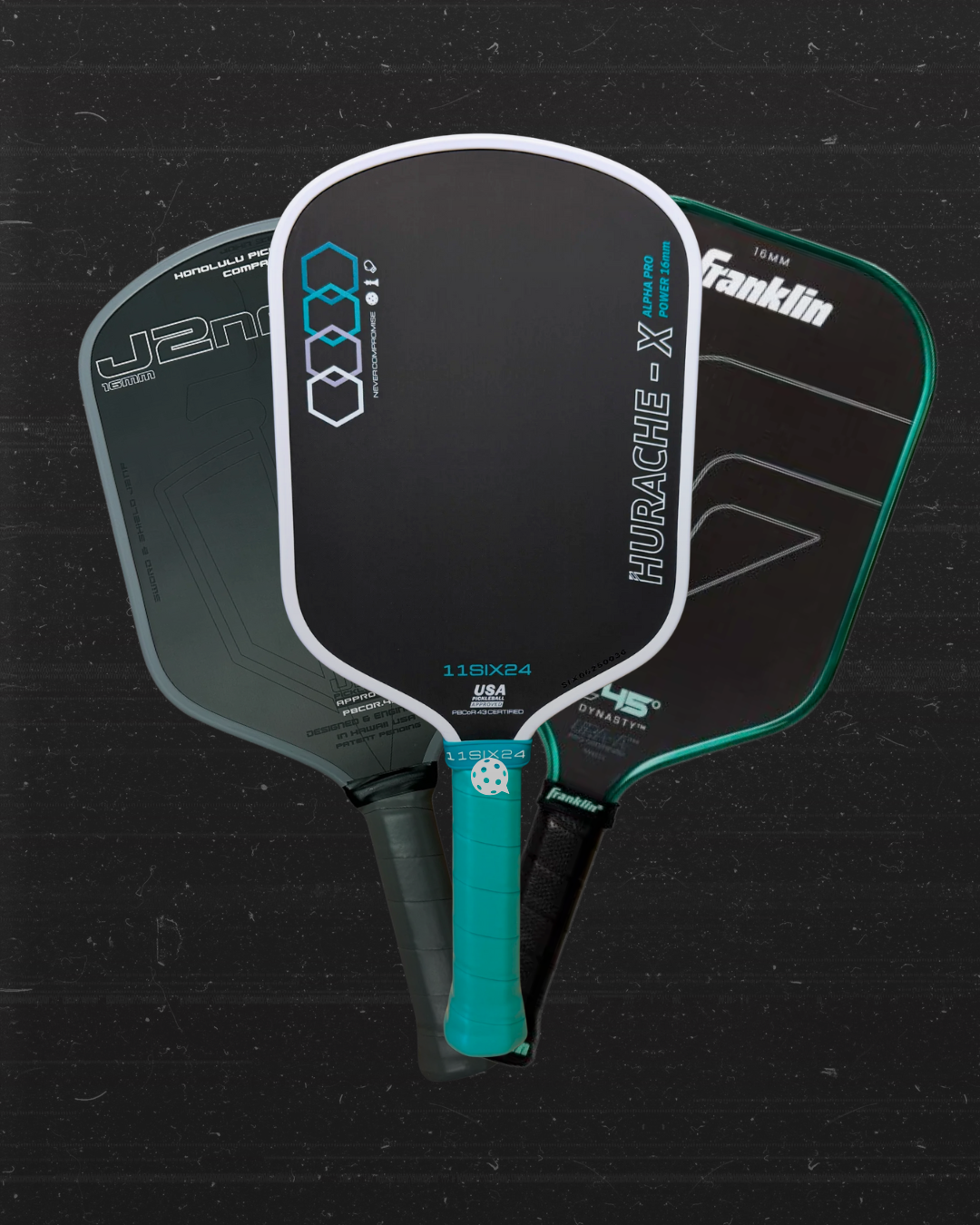When shopping for pickleball paddles, you'll encounter terms like Gen 1, Gen 2, Gen 3, Gen 4, and now even Gen 4.5. These aren't official industry standards.
They're marketing terms that have evolved to describe how paddles are constructed. Here's what you actually need to know about how these differences affect performance and durability.
Gen 1: The Traditional Sandwich Method
Gen 1 paddles use the original construction approach: two face sheets (usually carbon fiber or fiberglass) bonded to a polypropylene honeycomb core using adhesive, then cold-pressed together. Think of it like a sandwich where each layer is glued individually.
Gen 2: Thermoformed Construction
Gen 2 paddles represented the biggest leap in performance. Foam is injected into the paddle edges, then the entire paddle—including the edges—is wrapped in carbon fiber. The whole assembly goes into a heated mold for several hours, creating what manufacturers call "unibody" construction.
You can see the
step-by-step process here.
Thermoforming creates two major problems: core crushing, where polypropylene cells get compressed and cause erratic paddle hits, and delamination, where surface layers separate from the core. Most manufacturers have largely addressed these issues, but they remain the primary causes of paddle failure.
Gen 3: Foam enhanced cores
Gen 3 paddles use the same thermoformed process as Gen 2 but add foam in various locations—sometimes in the top half of the paddle or fully around the perimeter.
Results vary significantly between manufacturers. Unlike the clear power progression from Gen 1 to Gen 2, Gen 3 paddles don't follow a predictable pattern. Depending on foam density, placement, and type, they might be softer than Gen 2 paddles, more powerful, or somewhere in between. Some solve control issues that aggressive Gen 2 paddles create, while others push power even further.
Gen 3 performance depends entirely on the specific implementation. Research individual models rather than assuming "Gen 3" means better or more powerful. Even though Gen 3 technology has come a long way, they still have shown to have the most durability issues in the long-run.
Gen 4: Full Foam Cores
The newest construction method replaces traditional honeycomb cores with full foam cores. Companies like CRBN have introduced these with claims of solving delamination issues while providing more "dwell time" (the perceived feeling of how long the ball stays on the paddle face) for increased spin. Full foam cores tend to have wider sweet spots with more consistent feel across the face of the paddle.
These paddles appear to be the most durable construction available as of writing, offering better spin, though they can fail differently—through disbonding where foam separates from face sheets rather than traditional delamination.








